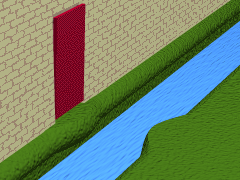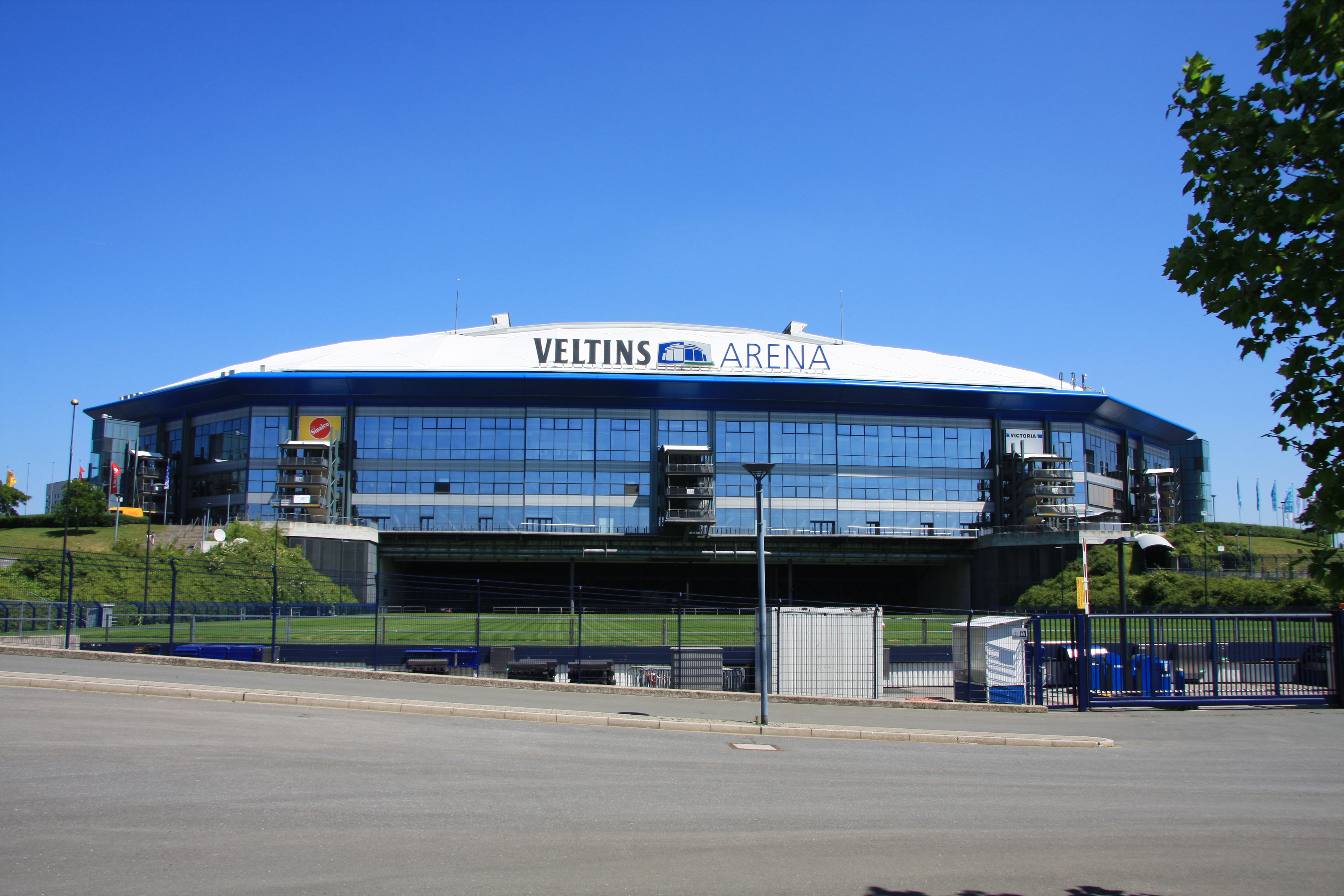Kinetic architecture on:
[Wikipedia]
[Google]
[Amazon]
Kinetic architecture is a concept through which buildings are designed to allow parts of the structure to move, without reducing overall structural integrity.
A building's capability for motion can be used just to: enhance its aesthetic qualities; respond to environmental conditions; and/or, perform functions that would be impossible for a static structure.
The possibilities for practical implementations of kinetic architecture increased sharply in the late 20th century due to advances in mechanics, electronics, and robotics.
 Rudimentary forms of kinetic architecture such as the
Rudimentary forms of kinetic architecture such as the
 By the early 21st century three interrelated themes had emerged. The first is for functional buildings such as bridges which can elevate their midsections to allow tall ships to pass, or stadiums with retractable roofs such as the
By the early 21st century three interrelated themes had emerged. The first is for functional buildings such as bridges which can elevate their midsections to allow tall ships to pass, or stadiums with retractable roofs such as the
Kinetic architecture dance trope
Robotecture: Interactive Architecture
– information and discussion about kinetic architecture and interactive architecture
Kinetic Architecture
– blog with many examples of kinetic architecture
Hoberman Transformable Design
– Chuck Hoberman's design group
Adaptive Building Initiative
– Company dedicated to designing and building adaptive buildings and structures
"What are 'Kinetic Buildings'?"
– 3 minute video {{Use dmy dates, date=October 2017 Architectural design Building engineering
History
 Rudimentary forms of kinetic architecture such as the
Rudimentary forms of kinetic architecture such as the drawbridge
A drawbridge or draw-bridge is a type of moveable bridge typically at the entrance to a castle or tower surrounded by a moat. In some forms of English, including American English, the word ''drawbridge'' commonly refers to all types of moveable b ...
can be traced back to the Middle Ages or earlier. Yet it was only in the early 20th century that architects began to widely discuss the possibility for movement to be enabled for a significant portion of a buildings' superstructure
A superstructure is an upward extension of an existing structure above a baseline. This term is applied to various kinds of physical structures such as buildings, bridges, or ships.
Aboard ships and large boats
On water craft, the superstruct ...
. In the first third of the 20th century, interest in kinetic architect was one of the stands of thought emerging from the Futurism
Futurism ( ) was an Art movement, artistic and social movement that originated in Italy, and to a lesser extent in other countries, in the early 20th century. It emphasized dynamism, speed, technology, youth, violence, and objects such as the ...
movement. Various papers and books included plans and drawings for moving buildings, a notable example being Chernikhov's ''101 Architectural Fantasies'' (1933). For the first few decades of the 20th century kinetic architecture was almost entirely theoretical, but by the 1940s innovators such as Buckminster Fuller
Richard Buckminster Fuller (; July 12, 1895 – July 1, 1983) was an American architect, systems theorist, writer, designer, inventor, philosopher, and futurist. He styled his name as R. Buckminster Fuller in his writings, publishing more t ...
began experimenting with concrete implementations, though his early efforts in this direction are not regarded as totally successful.
In 1970, engineer/architect William Zuk published the book ''Kinetic architecture'',
which helped inspire a new generation of architects to design an increasingly wide range of actual working kinetic buildings. Assisted by new concepts such as Fuller's Tensegrity
Tensegrity, tensional integrity or floating compression is a structural principle based on a system of isolated components under compression (physical), compression inside a network of continuous tension (mechanics), tension, and arranged in s ...
and by developments in robotics
Robotics is the interdisciplinary study and practice of the design, construction, operation, and use of robots.
Within mechanical engineering, robotics is the design and construction of the physical structures of robots, while in computer s ...
, kinetic buildings have become increasingly common worldwide since the 1980s.
Themes
 By the early 21st century three interrelated themes had emerged. The first is for functional buildings such as bridges which can elevate their midsections to allow tall ships to pass, or stadiums with retractable roofs such as the
By the early 21st century three interrelated themes had emerged. The first is for functional buildings such as bridges which can elevate their midsections to allow tall ships to pass, or stadiums with retractable roofs such as the Veltins-Arena
Arena AufSchalke (), currently known as Veltins-Arena () for sponsorship reasons, is a retractable roof and pitch, football stadium in Gelsenkirchen, North Rhine-Westphalia, Germany. It opened on 13 August 2001, as the new home ground for FC S ...
, Millennium Stadium
The Millennium Stadium (), known since 2016 as the Principality Stadium () for sponsorship reasons, is the national stadium of Wales. Located in Cardiff, it has a retractable roof and is the home of the Wales national rugby union team; it has ...
in Cardiff, or Wembley Stadium
Wembley Stadium, currently branded as Wembley Stadium connected by EE Limited, EE for sponsorship reasons, is an association football stadium in Wembley, London. It opened in 2007 on the site of the Wembley Stadium (1923), original Wembley Sta ...
.
A second theme is for fantastic structures that can perform Transformer
In electrical engineering, a transformer is a passive component that transfers electrical energy from one electrical circuit to another circuit, or multiple Electrical network, circuits. A varying current in any coil of the transformer produces ...
style changes of shape or which have a visually stunning appearance.
The bird-like ''Burke Brise soleil
Brise, Brisé or Briše may refer to:
* Brisé (dance), a type of jump in ballet
* "Brisé" (song), Maître Gims 2015
*Brisé (music), Style brisé (French: "broken style"), Baroque music
Places
* Briše, Kamnik, Slovenia
* Briše pri Polhovem G ...
'' at the Milwaukee Art Museum
The Milwaukee Art Museum (also referred to as MAM) is an art museum in Milwaukee, Wisconsin. Its collection of over 34,000 works of art and gallery spaces totaling 150,000 sq. ft. (13,900 m²) make it the largest art museum in the state of Wis ...
is a well regarded example of this, though it also has a functional aspect in that its movement allows it to shade the crowds from the sun or protect them from storms.
The third theme is for movement to occur on the surface of the building, creating what Buckminster Fuller called a "skin-like articulation" effect. A classic example of this is the Institut du Monde Arabe
The Institut du Monde Arabe (, ''Arab World Institute''; abbr. IMA) is an organisation founded in Paris in 1980 by France with 18 Arab countries to research and disseminate information about the Arab world and its cultural and spiritual values. ...
.
Other uses of the term
Architects Sarah Bonnemaison and Christine Macy have suggested that movement can be an inspiring idea for architecture without the designs having to allow for actual movement – they can merely suggest it as was the case for some of the constructions of Gaudi or their own recent work. The term ''Kinetic architecture'' can also refer to static buildings designed to accentuate human movement, such as the performing arts. The phrase has been chosen as a title for performing groups including a dance company.See also
*Responsive architecture
Responsive architecture is an evolving field of architectural practice and research. Responsive architectures are those that measure actual environmental conditions (via sensors) to enable buildings to adapt their form, shape, color or character re ...
Notes and references
External links
Robotecture: Interactive Architecture
– information and discussion about kinetic architecture and interactive architecture
Kinetic Architecture
– blog with many examples of kinetic architecture
Hoberman Transformable Design
– Chuck Hoberman's design group
Adaptive Building Initiative
– Company dedicated to designing and building adaptive buildings and structures
"What are 'Kinetic Buildings'?"
– 3 minute video {{Use dmy dates, date=October 2017 Architectural design Building engineering